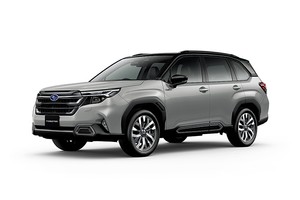THE ASAHI SHIMBUN
April 10, 2025 at 17:46 JST
U.S. President Donald Trump’s pause in his “reciprocal tariffs” was the latest twist in a period of uncertainty for many Japanese food and beverage exporters.
However, the reprieve could end in about three months. And the Japanese companies still have to deal with the earlier 10-percent tariff slapped on Japanese products entering their most important market.
Exports to the United States from Japanese companies in the agricultural, forestry and fishery industry, as well as the food and beverage sector, totaled 242.9 billion yen ($1.65 billion) in 2024.
Although the heightened popularity of Japanese food in the United States and the weaker yen have driven the exports, the companies have grown increasingly dependent on the U.S. market for survival, given the sluggish domestic market and other international problems.
Trump’s tariffs have created a new level of uncertainty and anxiety among the Japanese exporters.
SEAFOOD
In Monbetsu, Hokkaido, scallop fishing recently resumed after the drift ice in the Sea of Okhotsk disappeared.
Kazuya Yamazaki, president of local seafood producer Maruuroko Sanwa Suisan Co., expressed concerns for the future before Trump imposed—and then suspended--the 24-percent reciprocal tariff against Japan on April 9.
“There will definitely be an impact,” Yamazaki said.
Scallops have been called Japan’s “king of seafood.” However, their exports have faced hardships.
In summer 2023, Tokyo Electric Power Co. started releasing tons of treated water from its crippled Fukushima No. 1 nuclear power plant into the ocean.
China, the top destination of seafood exports from Japan, quickly announced a ban on Japanese marine products, citing safety concerns.
Stuck with huge amounts of scallops, seafood companies like Maruuroko Sanwa Suisan faced a dire situation. But they found an outlet by expanding new sales channels to the United States, Vietnam, Thailand and other countries.
Japanese scallop exports to the United States last year reached 19.1 billion yen, more than double the amount in 2022, before China imposed its ban.
The rising unit price has also been beneficial for Japanese seafood exporters.
Sanwa Suisan’s sales to the United States doubled over the past year and now account for nearly one-fifth of the total.
Last month, an American buyer came to Japan to inspect the company. From the way he spoke, he appeared “very interested in buying the company’s products,” Yamazaki said.
But Trump then threatened the tariffs.
Before that, there were no U.S. tariffs on Japanese seafood products.
Yamazaki fears his company will lose business if prices of the company’s products rise significantly in the United States because of the tariffs.
“Some buyers may start to hesitate to purchase our seafood,” he said.
KOBE BEEF
Kobe beef is highly regarded in the United States, particularly after U.S. President Barack Obama expressed a desire to try it when he visited Japan.
It is an expensive item that sells for several thousand yen per 100 grams in Japan. The tariffs would make the meat even more expensive in the United States.
According to Kobe-based meat distribution promotion organization Kobe Niku Ryutsu Suishin Kyogi Kai, 10 of the 43 tons of exported Kobe beef in fiscal 2024 up to the end of February landed in the United States.
Normally, the U.S. tariff on Japanese beef is 26.4 percent. If the reciprocal tariff is added, the rate will exceed 50 percent.
SFoods Inc., a major meat exporter based in Nishinomiya, Hyogo Prefecture, has already seen a series of order cancellations from American clients, including for Kobe beef.
Ryohei Yamaji, a senior official of the company, said, “The impact (of the tariffs) will be immeasurable, and all our efforts may be wasted.”
YELLOWTAIL
A sense of fear has also spread among Japanese companies dealing in yellowtail, one of the largest seafood export items to the United States.
According to the Fisheries Agency, yellowtail are fatty and have a strong flavor, making them popular items at Japanese restaurants in the United States.
The United States had imposed no tariffs on yellowtail, except for some imported refrigerated products.
The Azuma-Cho Fisheries Cooperative in Nagashima, Kagoshima Prefecture, engages in fish farming of yellowtail under the brand name “Burio.”
The cooperative exports around 2 billion yen’s worth of yellowtail annually. About 70 percent of the fish are shipped to the United States.
Although winter is the peak season for shipping, an official said, “We have no choice but to continue to keep a close eye on how things will go.”
SAKE
Alcoholic beverage exports to the United States reached 26.5 billion yen in 2024, making them the most valuable Japanese export last year.
Sake has recently been a driving force.
According to the Japan Sake and Shochu Makers Association, sake exports to the United States in 2024 increased by about 26 percent from the previous year to 11.4 billion yen. That was up about 2.8 times over the previous 10 years.
With the domestic market continuing to shrink, many Japanese breweries have been looking for new business opportunities overseas. Much to their relief, the U.S. market has increasingly developed a taste for sake.
The tariffs could put a damper on this trend.
Major sake brewery Homare Sake Brewery Co., based in Kitakata, Fukushima Prefecture, began exporting its products to the United States in 2006.
Now, the U.S. market accounts for 157 million yen of its exports, or 70 percent of the total.
Homare Sake Brewery’s export campaign received an assist when Japan’s sake-making skills and knowledge were registered as an intangible cultural heritage by UNESCO last year.
However, raw material costs are rising, and inflation in the United States has apparently reduced customer numbers at Japanese restaurants.
Trump’s tariffs could further raise sake prices in the United States.
“We are facing a triple hardship,” Hiroyuki Karahashi, president of Homare Sake Brewery, said.
JETRO INUNDATED
The Japan External Trade Organization (JETRO) set up a telephone and online consultation service for companies on Feb. 2. By April 2, JETRO had received about 400 inquiries.
After April 3, when word came out that Trump was planning the 24-percent reciprocal tariff against Japan, the number of inquiries surged to about 360 by noon on April 8.
Forty percent of the inquiries were made by large companies, and 60 percent were from small and mid-sized companies. Many were trading companies and manufacturers that do business in the United States.
Most of the companies wanted to know if their products would be subject to the reciprocal tariff. Others wanted to know the tariff rates on products made in other countries for export to the United States.
Some companies were asked by their U.S. partners to reduce their prices by the size of the tariff.
“We would like to consider ways to respond to the tariffs together with these Japanese companies, such as expanding sales destinations other than the United States,” said Yoshiaki Ishihara, head of the overseas business support center of JETRO.
(This article was written by Shinichi Maruishi, Nobufumi Yamada, Susumu Okamoto and Tomonori Asada.)




















A peek through the music industry’s curtain at the producers who harnessed social media to help their idols go global.
A series based on diplomatic documents declassified by Japan’s Foreign Ministry
Here is a collection of first-hand accounts by “hibakusha” atomic bomb survivors.
Cooking experts, chefs and others involved in the field of food introduce their special recipes intertwined with their paths in life.
A series about Japanese-Americans and their memories of World War II